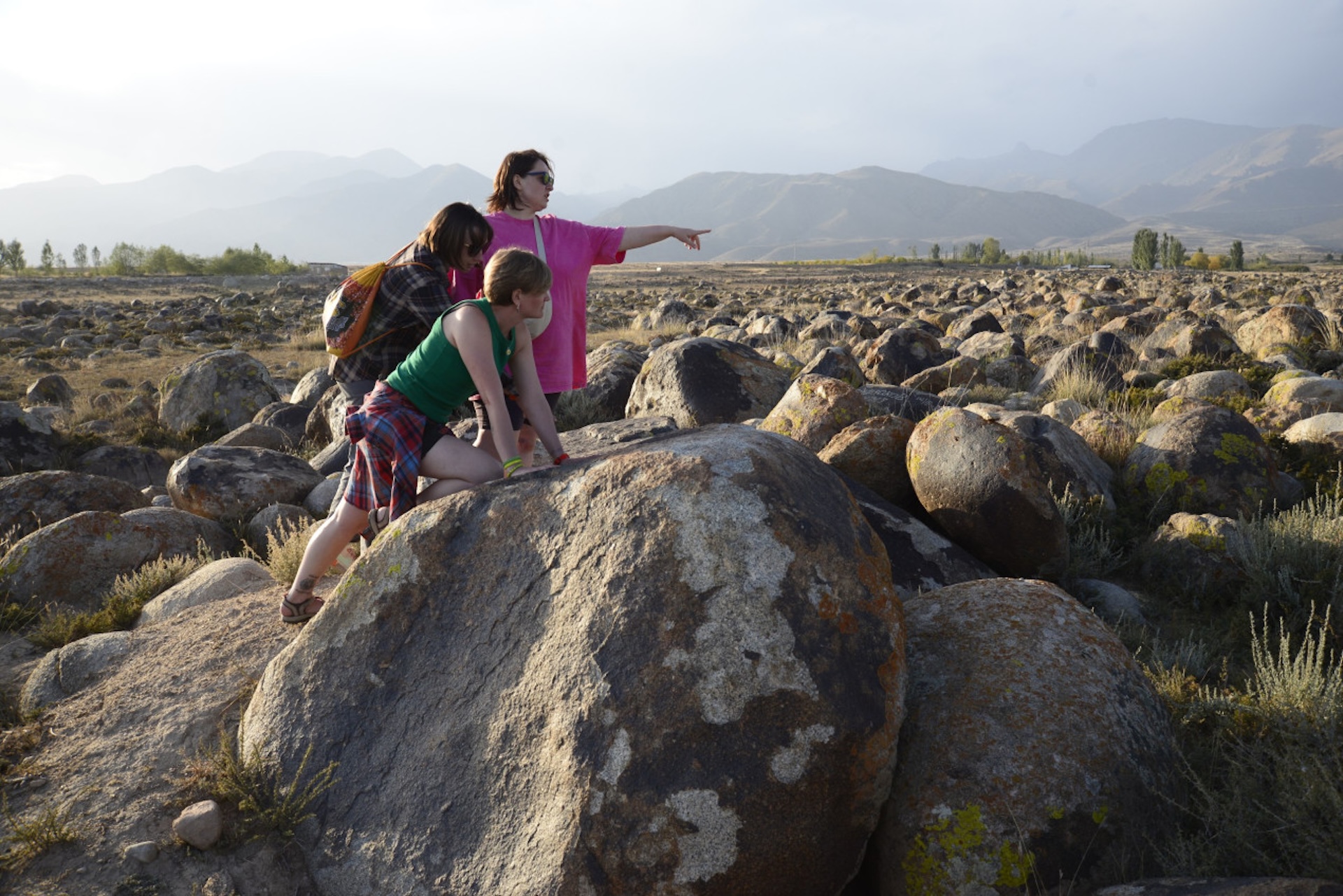Sunken city discovered in Kyrgyzstan lake was a medieval hotspot on the Silk Road — until an earthquake wiped it out
Archaeologists in Kyrgyzstan have discovered the remains of a drowned medieval city that was once a Silk Road hotspot.

Archaeologists have discovered a drowned medieval city beneath the waters of a salt lake in northeast Kyrgyzstan.
The location was an important stop on one of the Silk Roads between China and the West during medieval times. But it's thought a city there was struck by a major earthquake in the 15th century, causing it to sink beneath the water.
Now, researchers have found the remains of the drowned city while exploring submerged sites in Lake Issyk-Kul, high in the Tian Shan mountains near Kyrgyzstan's border with Kazakhstan, according to a statement from the Russian Geographical Society.
Sunken city
According to Kyrgyzstan's government, Issyk-Kul is one of the deepest lakes in the world, with parts reaching 2,300 feet (700 meters) below the surface. It has no river outlet and it is mildly salty.
The researchers surveyed four submerged sites, between 3 feet and 13 feet (1 and 4 m) deep, near the northwest shore of the lake — the location in the Middle Ages of a mainly Muslim settlement called Toru-Aygyr.
"The monument under study is a city or a large commercial agglomeration on one of the important sections of the Silk Road," archaeologist Valerii Kolchenko, the head of the Kyrgyzstan contingent of researchers on the expedition, said in the statement.
"At the beginning of the 15th century, as a result of a terrible earthquake, the city went under the waters of the lake … the tragedy can be compared to Pompeii."
Get the world’s most fascinating discoveries delivered straight to your inbox.
The team discovered the remains of several now-submerged buildings made with kiln-fired bricks, including one that contained a millstone — evidence that it was once a mill for grain.
They also found collapsed stone structures, wooden beams, and the remains of a public building with exterior decorations that may have been a mosque or Islamic school, known as a madrassa.

Medieval Muslim cemetery
One of the underwater sites revealed the remains of a Muslim cemetery that covered an area of roughly 14 acres (6 hectares) — about the size of 11 football fields.
The team recovered the remains of two of the dead from the cemetery, and found that their faces had been turned toward the direction of Mecca, which is now in Saudi Arabia — a common practice in Muslim burials.
Archaeologists think the cemetery dates to around the 13th century, when Islam was introduced to the region by the Golden Horde, a Mongol state that ruled much of central Asia from the 1240s until 1502.
Before that, the region was ruled from the 10th century by the Karakhanids, a Turkic dynasty centered on Kyrgyzstan, the statement said.
Toru-Aygyr was a multicultural city when it was founded before the 13th century, expedition leader Maksim Menshikov, of the Institute of Archaeology of the Russian Academy of Sciences, said in the statement. "People here practiced various religions: pagan Tengrianism, Buddhism, Nestorian Christianity," he said. But the introduction of Islam changed the character of the city, he said, as people preferred to trade with other Muslims.
Another site in the sunken city yielded several pieces of medieval Muslim pottery, including a large and intact khum, or water jar, that the researchers plan to raise during a future expedition.
Three burials were also found nearby, but these are thought to have been in an earlier, non-Islamic cemetery.
The researchers also discovered the remains of mud-brick buildings, and they carried out underwater drilling at the sites to take sediment cores that can be used to reconstruct the stages of the city's development, the statement said.
Tom Metcalfe is a freelance journalist and regular Live Science contributor who is based in London in the United Kingdom. Tom writes mainly about science, space, archaeology, the Earth and the oceans. He has also written for the BBC, NBC News, National Geographic, Scientific American, Air & Space, and many others.
You must confirm your public display name before commenting
Please logout and then login again, you will then be prompted to enter your display name.
